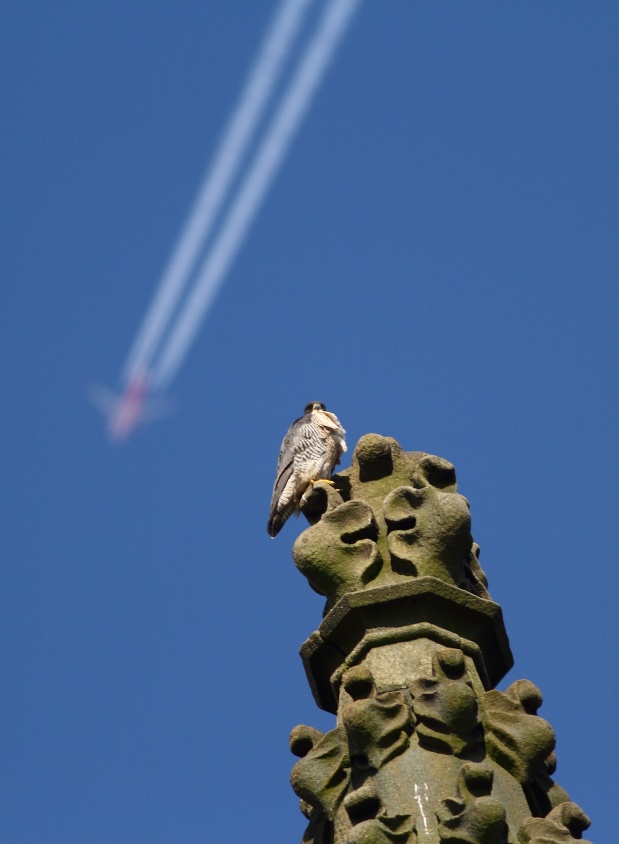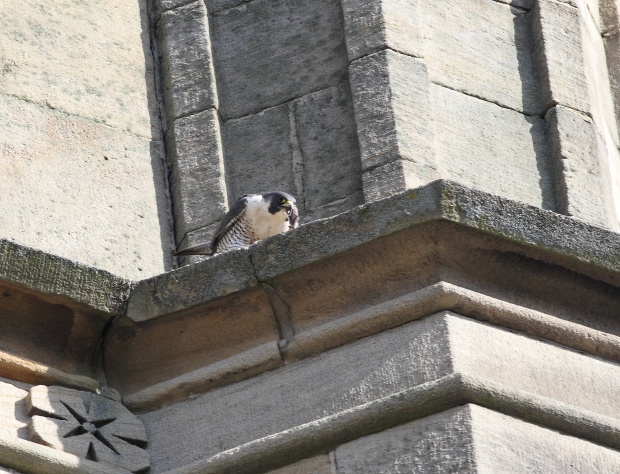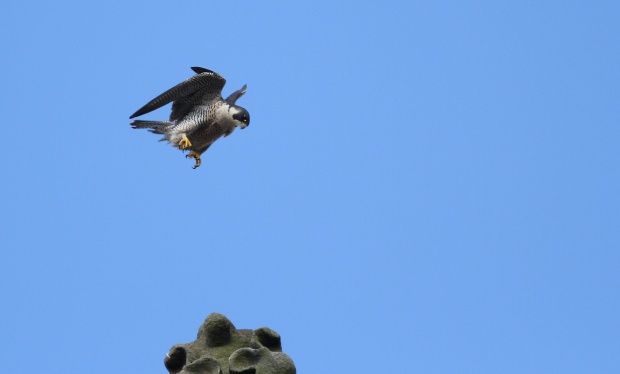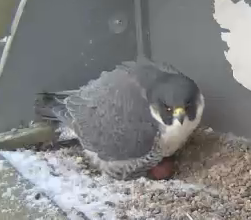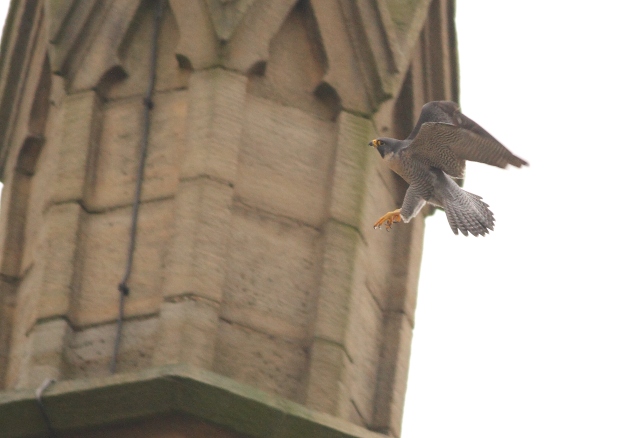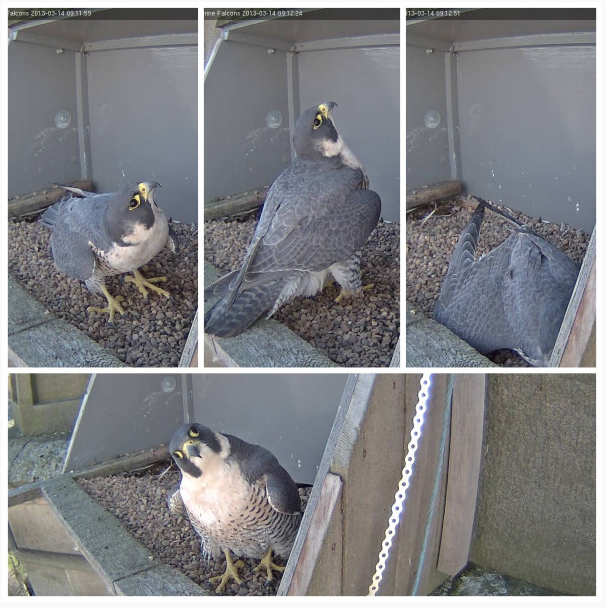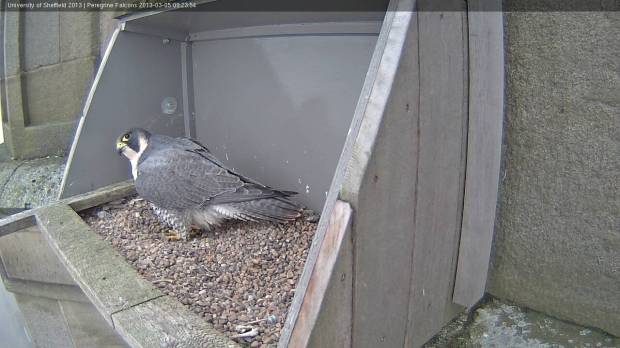With the webcam still unavailable (to me, at least) a visit in this morning’s sun seemed in order. From a distance it was obvious that one of the adults was on the very top of the church tower: even when there’s not a bird on the nest platform there’s typically one nearby. The combination of size, lack of a ring and buff-ish fringes to the tail feathers made it clear that this was the female, but she seemed in no hurry to return to incubation duties, watching a series of Woodpigeons pass below her, and even being overshadowed by something faster than she is!
After some extensive preening, she looked ready to fly off, but I was surprised to see her drop onto the ledge that runs around the top of the church tower, where she began to pull at something. It quickly became clear that they have a larder on the ledge, where food is stored for later consumption, in this case apparently another feral pigeon, which have been found to make up over half of the diet of urban Peregrines.
Another egg might be expected tomorrow (Sunday), but it may be a little while until we can be sure. In the meantime, there are some excellent views to be had of the adults as they are stationed on the tower. They tend not to be overly active, but no less spectacular for that, as these pictures from this morning show.
